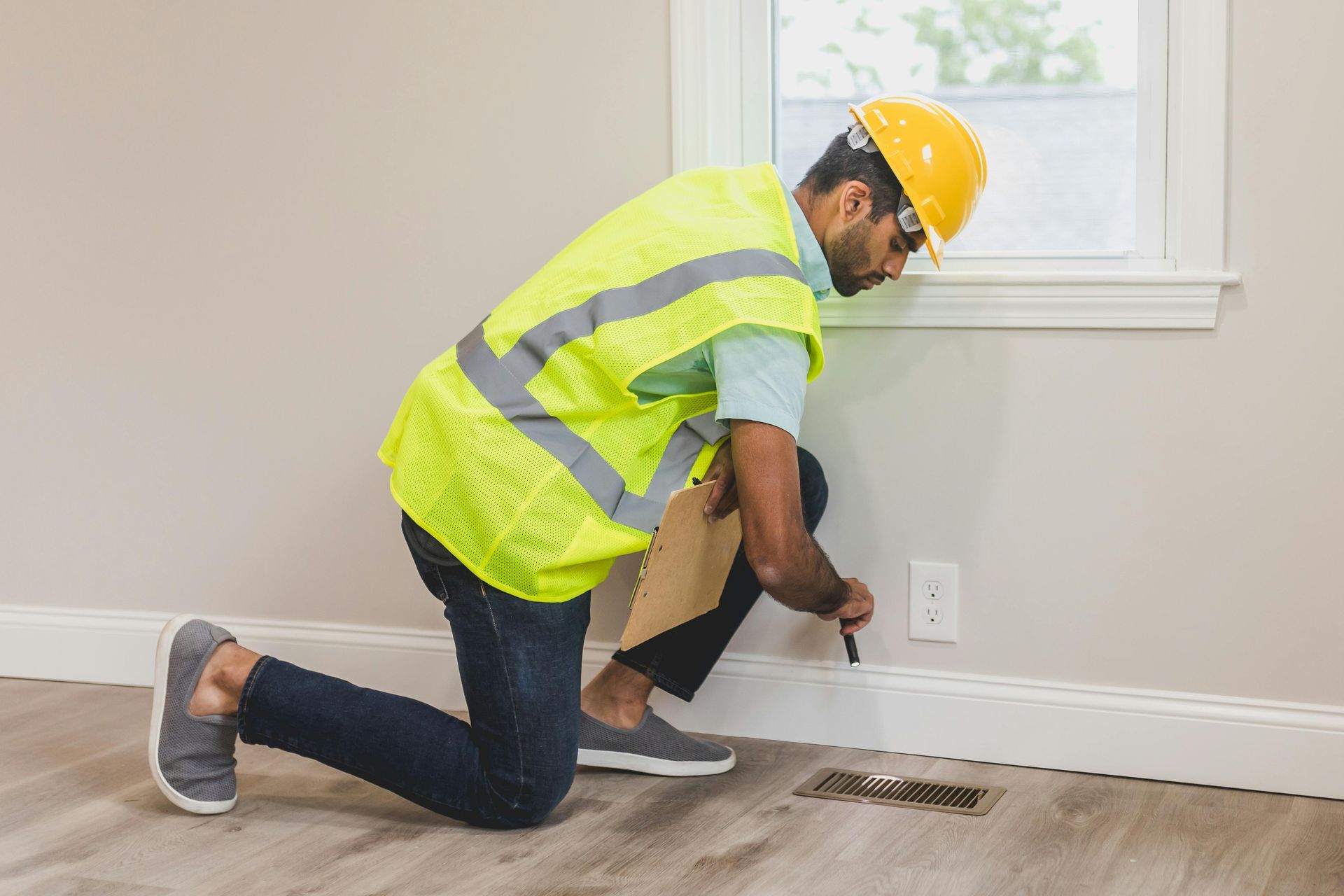How To Test Indoor Air Quality
The air we breathe indoors is often overlooked. Yet, it plays a crucial role in our health and well-being.
Poor indoor air quality can lead to a host of health issues. These range from allergies and respiratory problems to more severe conditions.
Understanding and testing indoor air quality is therefore essential. It helps identify potential pollutants and provides ways to improve the air we breathe daily.
This article will guide you through the process of
indoor air quality testing. It will also shed light on related topics such as duct cleaning and air quality monitors.
Whether you're a homeowner, office manager, or just health-conscious, this guide is for you. Let's dive in and learn how to ensure the air we breathe indoors is clean and safe.
Understanding Indoor Air Quality and Its Importance
Indoor air quality refers to the air quality within and around buildings and structures. It's particularly important as it can affect our health, comfort, and ability to work.
Poor indoor air quality can cause immediate health effects. These include headaches, dizziness, fatigue, and itchy eyes. Long-term effects, appearing years later, can be severely debilitating or fatal.
On the other hand,
good indoor air quality enhances well-being and productivity. It reduces the risk of health issues and creates a more comfortable living and working environment.
Understanding and maintaining good indoor air quality is therefore not just a luxury. It's a necessity for our health and overall quality of life.
Photo By: Bankrate
Common Indoor Air Pollutants and Their Effects
Indoor air can be polluted by a variety of contaminants. These pollutants can originate from both inside and outside the building.
Common indoor air pollutants include
Volatile Organic Compounds (VOCs),
mold,
dust mites, and
allergens. These can come from everyday items like cleaning products, furniture, and even the building materials used in your home or office.
The effects of these pollutants on our health can be significant. They can cause or exacerbate respiratory issues, allergies, and other health problems.
Here are some common indoor air pollutants and their potential health effects:
- Volatile Organic Compounds (VOCs): Can cause headaches, dizziness, and irritation of the eyes, nose, and throat.
- Mold: Can trigger allergies and asthma attacks, and cause other respiratory issues.
- Dust Mites: Can cause allergic reactions and asthma symptoms.
- Allergens: Can trigger allergies and asthma attacks, and cause other respiratory issues.
Professional Indoor Air Quality Services vs. DIY Testing
When it comes to indoor air quality testing, you have two main options. You can either hire a professional service or do it yourself.
Professional
indoor air quality services have the advantage of expertise and advanced equipment. They can identify a wide range of pollutants and provide detailed reports.
On the other hand, DIY testing can be a more affordable option. There are many
home air quality test kits available on the market. However, they may not be as comprehensive or accurate as professional testing.
In the end, the choice depends on your specific needs, budget, and the severity of your air quality issues.
How to Find Indoor Air Quality Testing Near Me
Finding a reliable indoor air quality testing service near you can be as simple as doing an online search. Use keywords like "indoor air quality testing near me" or "air quality services in [your location]".
Look for services with good reviews and professional certifications. It's also important to check what pollutants they test for and what methods they use.
Remember, the goal is to find a service that can provide accurate results and effective solutions for improving your indoor air quality.
What is Duct Cleaning and How Does it Affect Air Quality
Duct cleaning plays a crucial role in maintaining good indoor air quality. Over time, dust, allergens, and other pollutants can accumulate in your air ducts.
When your HVAC system is in operation, these pollutants can be circulated throughout your home or office. This can lead to poor indoor air quality and potential health issues.
Regular duct cleaning can help prevent this. It removes the buildup of contaminants, ensuring cleaner, healthier air circulation.
Using Air Quality Monitors and Air Duct Sanitizers
Air quality monitors are essential tools for indoor air quality testing. They measure the levels of various pollutants in your indoor environment.
These devices can detect pollutants like VOCs, dust, allergens, and even carbon monoxide. With real-time data, they help you understand your indoor air quality at any given moment.
Air duct sanitizers, on the other hand, are used to eliminate microbial contaminants in your HVAC system. They can kill bacteria, viruses, and mold that may be present in your air ducts.
Using both air quality monitors and air duct sanitizers can significantly improve your indoor air quality.
Step-by-Step Guide to a Home Air Quality Test
Conducting a home air quality test can be a simple process. Here's a step-by-step guide to help you through it.
- Purchase a home air quality test kit. These kits are readily available online or at your local home improvement store.
- Follow the instructions provided with the kit. Most kits will require you to collect air samples from various rooms in your home.
- Send the collected samples to a lab for analysis. Some kits come with prepaid mailing envelopes for this purpose.
- Wait for the results. The lab will analyze your samples and provide a detailed report of your indoor air quality.
- Interpret the results. The report will indicate the levels of various pollutants in your home.
- Take action based on the results. If your indoor air quality is poor, consider hiring professional indoor air quality services or implementing DIY solutions to improve it.
Interpreting the Results of Your Air Quality Test
Once you receive the results from your home air quality test, it's crucial to understand what they mean. The report will typically indicate the levels of various pollutants in your home.
High levels of pollutants such as VOCs, mold, dust mites, and allergens can indicate poor indoor air quality. These pollutants can cause
health issues like allergies and respiratory problems.
If your report shows high pollutant levels, it's time to take action. Consider hiring professional indoor air quality services or implementing DIY solutions to improve your indoor air quality.
Tips for Improving Indoor Air Quality
Improving indoor air quality doesn't have to be a daunting task. There are several simple steps you can take to make a significant difference.
Firstly, regular cleaning can help reduce dust and allergens. Use a vacuum with a HEPA filter and mop floors regularly. Also, consider using air purifiers in rooms where you spend the most time.
Secondly, proper ventilation is key. Open windows when possible and use exhaust fans in your kitchen and bathroom.
Lastly, consider the products you bring into your home. Opt for low-VOC paints and cleaning products, and be mindful of the potential for off-gassing from new furniture or carpets.
By following these tips, you can take a proactive approach to maintaining healthy indoor air.
Conclusion: The Continuous Journey of Indoor Air Quality Management
At Wild Blue Home Inspections, we understand the vital role that indoor air quality plays in your health and well-being. It's not just about the air you breathe; it's about the life you live.
Our team is dedicated to helping you navigate this journey towards healthier indoor air. We provide professional indoor air quality testing, home inspection services, and expert advice to enhance the air quality in your home or office. Plus, with our advanced
8-in-1 air monitor, we offer cutting-edge technology to monitor and improve the air you breathe.
Take the first step towards cleaner and safer indoor air today.
Contact us and let Wild Blue Home Inspections be your partner in maintaining good indoor air quality.
Share this blog!




